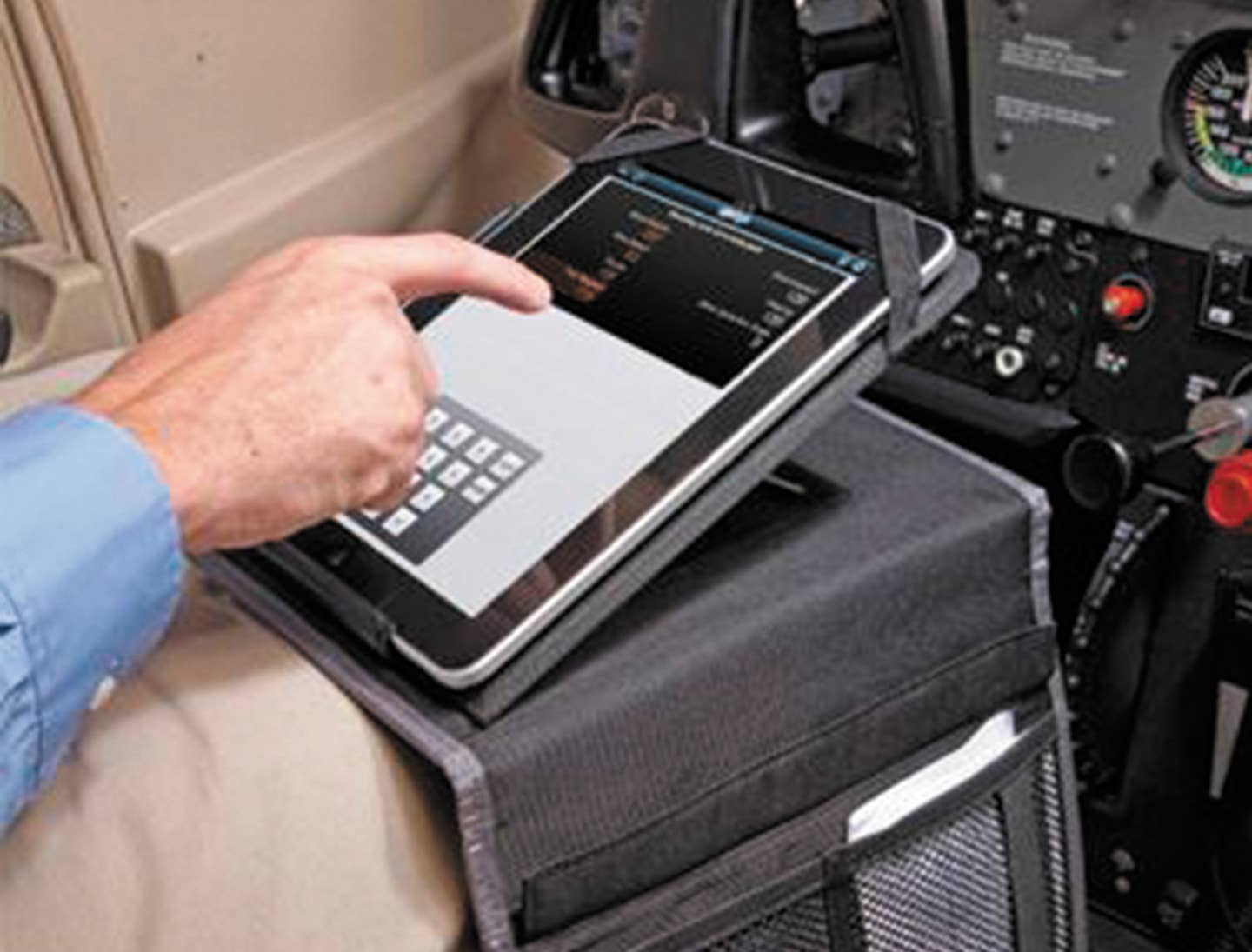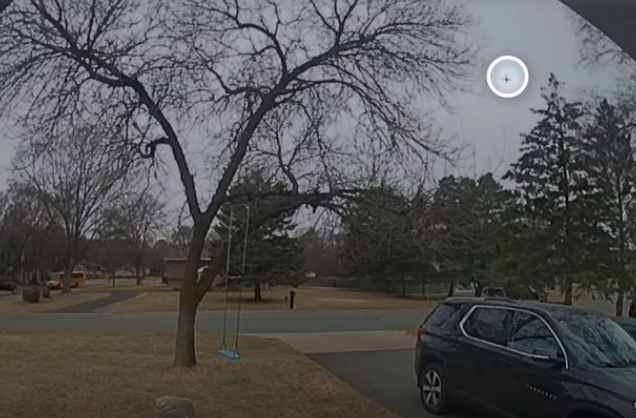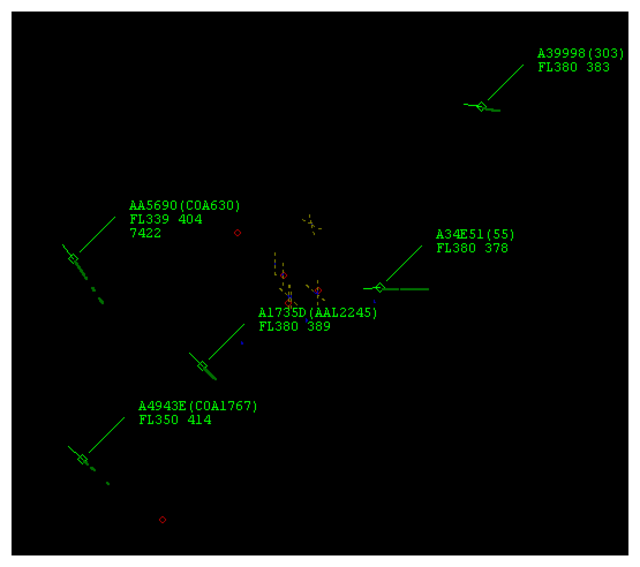Stay Ahead While En Route
It’s a beautiful morning and you just received a standard pilot weather briefing for a long cross-country flight—one that covers a day full of activity. The skies are calm, clear…

Having access to inflight alerts regarding weather and NOTAMs is an amazing capability.
It’s a beautiful morning and you just received a standard pilot weather briefing for a long cross-country flight—one that covers a day full of activity. The skies are calm, clear and worry-free right now, but the forecast indicates possible turbulence, icing or storm activity later in the day while you still expect to be in the air. Once you are strapped-in and aloft, how do you know if things are changing quicker than anticipated?
Consider The Scenario
During the summer pilots frequently call for briefings early in the morning before the rising sun can begin heating the atmosphere. If they’re flying through the west Texas or Oklahoma areas, where a natural dry line only needs a little lift to begin rapid upward development of thunderstorms, the radar can go from completely clear to widespread severe convective activity within one hour.
The Severe Storm Center monitors the atmosphere for just the right combination of conditions to occur and frequently will issue a severe storm warning or tornado warning just as the upward development begins. Other Weather Service offices issue AIRMETs when they suspect icing or turbulence could develop, and are watching for evidence that the danger is increasing. As cold air passes over the Great Lakes and they confirm atmospheric saturation, a SIGMET is issued—two hours after you got your preflight briefing.
By this time, you are already airborne and headed into danger. How can you know what may be an imminent change in the weather picture?
Another unseen possibility is that the airport you are flying to suddenly has a condition that causes their only runway to close. It could be weather related, or an aircraft accident has occurred, or any number of possibilities—that occurred after your briefing. Wouldn’t it be great to have knowledge of the problem so you can seek alternative options while still many miles from the situation?
Enter ACAS
That is the premise upon which Flight Service created the Adverse Condition Alerting Service or ACAS. ACAS monitors VFR flight plans continuously from the time they are filed until they are closed. IFR flight plans are monitored unceasingly from the estimated time of departure (ETD) to the estimated arrival time.
Beginning two hours prior to the proposed departure time, the ACAS system sends an alert to the device a pilot has designated whenever the National Weather Service updates its Flight Advisories and Weather alerts. Email and text messages are used to deliver the alerts during the preflight phase; cockpit satellite communications devices are used during the in-flight phase.
Several vendor devices are now supported, with more being added. The alerts, as shown in the following table, are only sent to those pilots who have registered for the service.
Once you have filed a flight plan, the Flight Service computer keeps track of all the adverse conditions and weather advisories that are released from that time forward as related to your route of flight. These are sent to your registered device(s).
The system also ties your flight plan to the ACAS so if you call Flight Service to relay a clearance in a remote area, or if you activate a VFR flight plan, the Specialist answering your call has any alerts connected to that flight plan that have come in since your briefing. They are able to immediately tell you what new information is available.
Also, should you choose to amend your departure point, destination, route or altitude the computer will bring up anything pertinent to the new information that you would not have received previously.
Any Flight Planning Tablet App
Now that Flight Service hosts the only point of flight plan input for general aviation, your information is available to its computers regardless of which company you actually file it with. You can still use Foreflight, SkyVector, Garmin Pilot, or whatever preflight weather briefing and flight plan filing service you prefer, and ACAS captures the data in order to send relevant updates.
Pilots may register for the ACAS, either by calling Flight Service or via the Pilot Web at https://www.1800wxbrief.com. To sign up for the service you will need to provide information as to what type of communications devices you have. The service is free of cost so you can use it in lieu of, or in addition to, whatever self-briefing or flight plan filing websites you already have.
A series of 21 videos are available from the ACAS site that will lead you to achieving the greatest return from the system. The training excursions vary from a few minutes to several that are more than an hour in length.
The alerts are tied to the specific weather or NOTAM data products received by the Flight Service computer as listed above. Therefore, some things don’t trigger an ACAS alert as shown in the following table, but may still be significant. For instance, only UUA (Urgent) Pilot Reports will trigger an alert. Standard (UA) Pilot Reports don’t cause an alert even if there is some kind of relevant information in remarks. METARs or SPECIs will not generate an alert.
No one can anticipate every whim of Mother Nature, but ACAS gives you an edge on understanding what you are flying into.
ACAS Generated Alerts
- Temporary flight restrictions (TFR)
- Runway closed/unsafe NOTAMs
- Airport closure NOTAMs
- Urgent PIREPs (UUA)
- SIGMETs (WS)
- Convective SIGMETs (WST)
- AIRMETs (WA)
- Center Weather Advisories (CWA)
- Severe WX Watches/Warnings (AWW/WW)
Conditions That Will NOT Trigger An Alert
- Airport weather downgraded to IMC
- T-storms reported in a METAR, TAF, or FA outside of a WST
- PIREP light to moderate icing or turbulence
- Frontal zones along the route of flight
- Strong winds as indicated in winds aloft
- Air traffic delays
- Airspace NOTAMs, such as Drone or Parachuting
- Changes to Class Airspace NOTAMs
- NOTAM not about runway or Airport closures
- Other critical data found in METAR remarks such as tornadic activity, LLWS, etc.
Rose Marie Kern is a national award-winning ATC Flight Service specialist for over 34 years. Her most recent book “Stress is Relative: Memoir of an Air Traffic Controller” is available on Amazon. www.rosemariekern.com.
This article originally appeared in the January 2019 issue of IFR Refresher magazine.
For more great content like this, subscribe toIFR Refresher!






